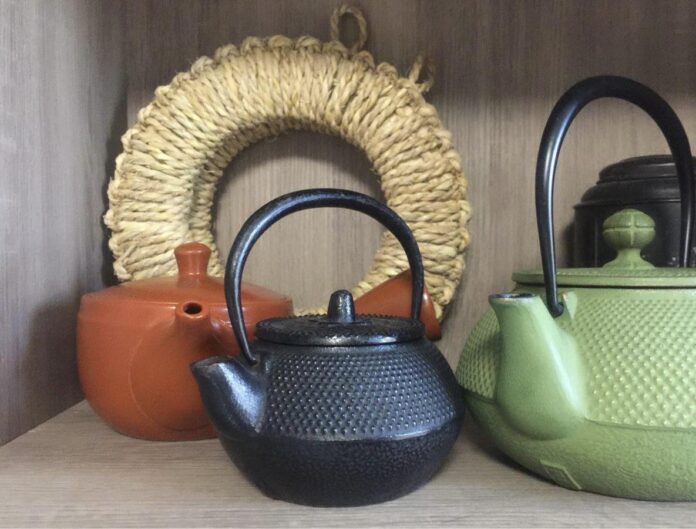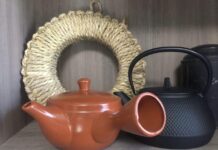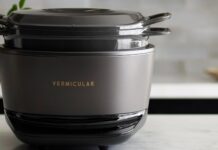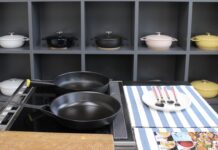If you visit Japan, you will be amazed at the wide variety of teapots available. And you will notice they are much smaller than their Western counterparts. So why are many Japanese teapots made so small, and should you consider using one?
Table Of Contents
- Historically, tea was expensive, resulting in small teapots
- You will use less tea (Mottainai)
- Make a fresh cup of tea for your guests
- A quick catch-up and chit-chat
- Why should I buy a small Japanese teapot?
- Tradition
- Perfect size for everyday use
- Cute and pleasing appearance
- Conclusion
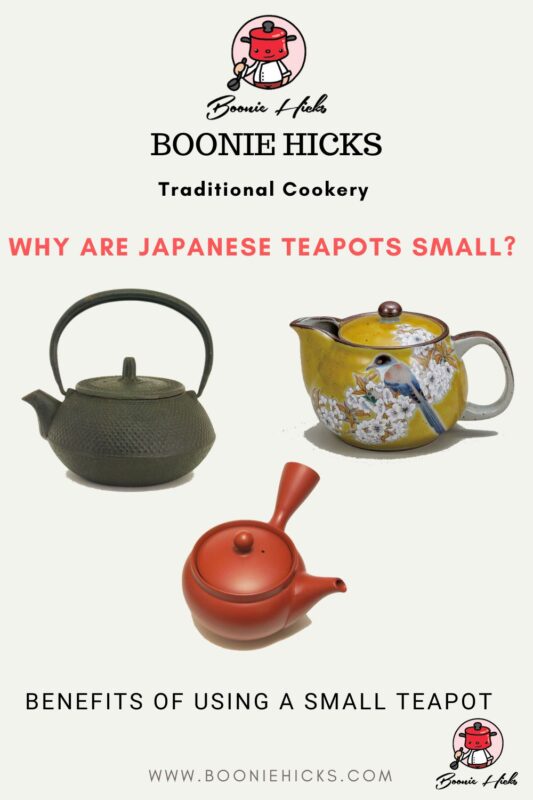
Why Are Japanese Teapots So Small?
Historically, Tea Was Expensive, Resulting In small Teapots.
Japanese teapots come in a variety of different styles. And each has slight benefits depending on the type of loose-leaf tea you use. However, they all tend to be much smaller than a Western teapot. The smaller size is likely due to the expense of high-quality tea and the influence of Chinese teapots.
Chinese religious leaders first introduced tea to Japan by visiting Buddhist monks as early as the 8th century. And by the 12th century, it became a fashionable drink among the high classes. Unfortunately, loose-leaf tea was an expensive commodity and a luxury for most. And this undoubtedly impacted teapot design in both China and Japan.
Probably, the high classes wanted the best quality tea they could afford. The lower classes also drank tea to extract nutrients. So, a tiny teapot served two purposes: to steep tea while avoiding wastefulness.
With A Small Teapot, You Will Use Less Tea (Mottainai)
Japanese still maintain the use only what you need culture. Tipping tea down the sink would be considered wasteful. So many Japanese prefer to make one or two cups of tea at a time.
Wastefulness is called Mottainai and is a practice engrained in Japanese society, even among young people today. And I suspect when selecting a teapot, the Japanese will consider the size appropriate to their needs.
Japanese Hospitality (Omotonashi)
Hospitality could also explain why the Japanese use small teapots, as it is customary to offer refreshments to visitors. Most older Japanese homes had an indoor firepit to cook and boil water. And using a small teapot, hosts could quickly serve a visitor a refreshment.
This practice continues today in homes and businesses. And even if you visit a mechanic in Japan, you will likely be offered a small cup of tea as you wait. This hospitality is known as Omotonashi. It is to go above and beyond what is necessary.
Business Etiquette And Polite Chit-Chat
Along with small teapots, Japanese teacups are much smaller than standard English teacups. Probably for the same reasons as tea was expensive.
It is customary to offer a cup of tea when visiting a home or conducting business. Of course, the purpose is not to entertain but to pass the waiting time.
Did you know there is an area famous for manufacturing ironware in Japan? You can learn about Nanbu Tekki in this article.
Why Should I Buy A Small Japanese Teapot?
We can now look beyond the historical circumstances and enjoy the practicality of a small teapot.
Many tea enthusiasts often choose a small teapot for the best tea-drinking experience. But there are also ascetic reasons to opt for a small teapot instead of a large Western teapot, and these reasons include:
- The love of Japanese tea culture
- Individual size
- Appealing looks
For The Traditional Appearance
If you want a traditional Japanese teapot, you should expect it to be small. Your initial reaction may be that the pot is too small. However, these little teapots can hold a surprising amount of tea. And you will still be able to fill a standard cup of tea.
Needless to Japanese and Chinese teapots are iconic looking. They have an authentic look that is hard to replicate with large pots. If you love Japanese culture, then opt for a side-handled Kyusu.
Perfect Size For A Cup Of Tea
I have several teapots, including several enameled cast Western-inspired pots. However, I always reach for the traditional single-serve teapots. I use less tea, and the tea strainer is easy to clean.
Traditional Japanese teapots also hold enough for one serving of tea, which makes them practical for everyday use. If you visit a Japanese office, you will likely see workers with small teapots on their desks.
Learn how to correctly use your cast iron teapot to prevent damage in this step-by-step guide.
Choose Your Favorite Style.
While you may read or watch the benefits of using a small teapot. The fact is, most people will choose a teapot based on size and appearance. And I think you should too. Japanese teapots come in different styles, and many have traditional patterns or cute designs.
Here are the types of Japanese teapots you are likely to see.
- Uwade (top handle)
- Hohin (no handle)
- Yokode (side handle)
- Ushirode (back handle)
While tea enthusiasts may recommend a non-porous clay pot, I suggest beginners start with a glazed or enameled teapot. A glazed or cast iron enameled teapot is easier to clean and maintain.
Most Japanese teapots are either earthenware or ceramic porcelain. However, I think cast iron teapots are often the better choice. Click the link if you’re interested to learn more.
Why Are Japanese Teapots Smaller Than Western Teapots?
Japanese teapots are small for historical reasons, such as tea being expensive and hot water readily available to make fresh tea. Today, Japanese teapots are the perfect size for individual use. And this makes them more practical to make a cup of tea.
Sure, if you have friends over for a tea party with cakes and scones, you can’t go wrong with a traditional English teapot like the Brown Betty. But for single use in your home or office, the Japanese teapot is often the better option.


